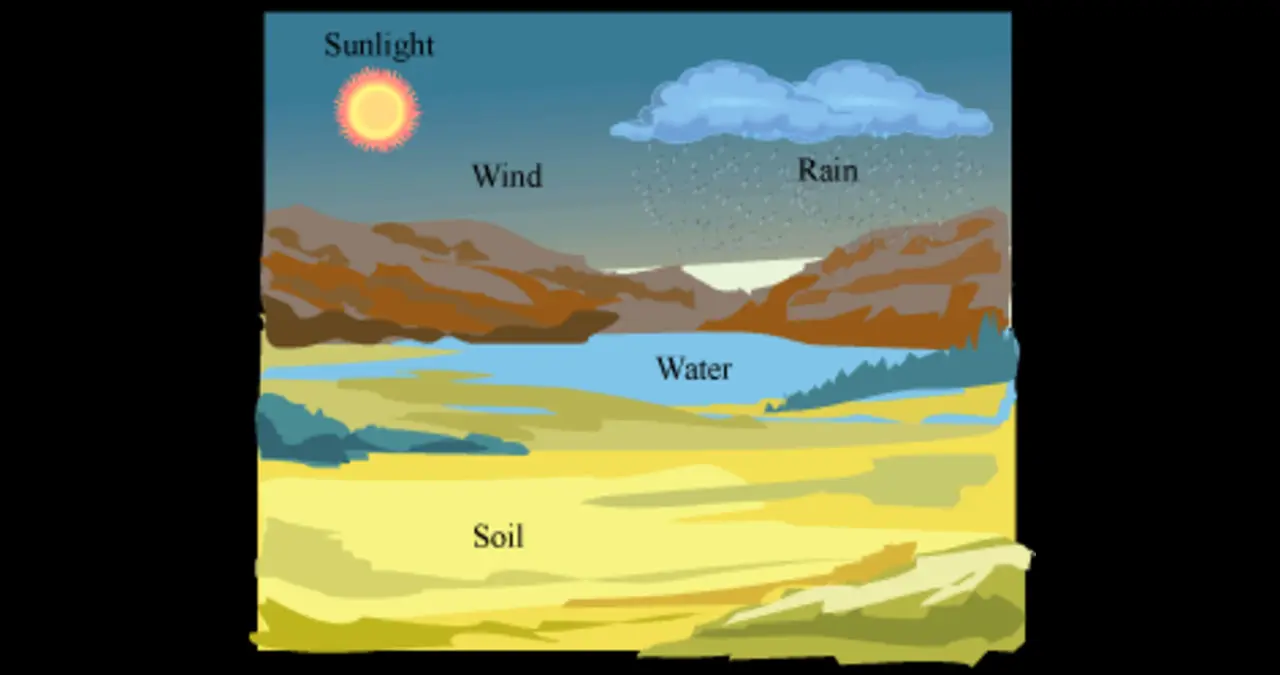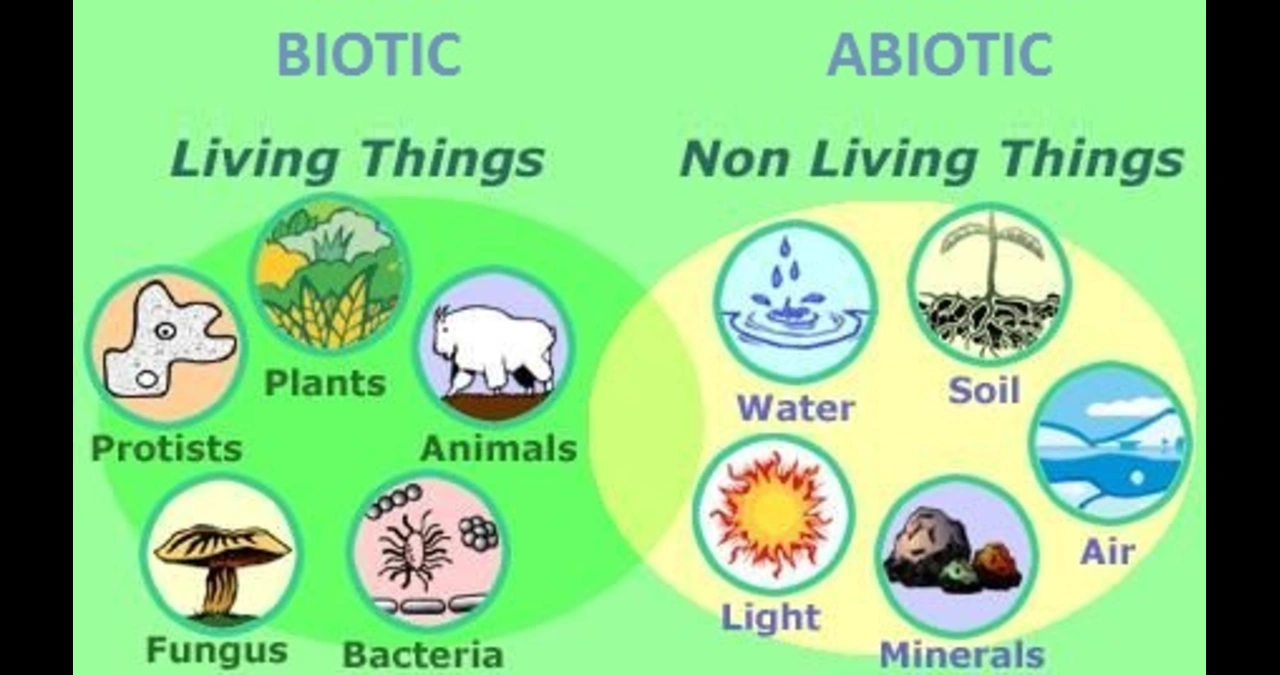Abiotic Factors When we talk about ecosystems, the first things that usually come to mind are animals, plants, and other living organisms. These living components, known as biotic factors, often steal the spotlight. But behind the scenes, there’s a crucial element shaping life on Earth — abiotic factors. These non-living components play a fundamental role in defining the environment and influencing the survival and behavior of organisms. From sunlight and temperature to soil composition and water availability, abiotic factors set the stage on which life unfolds.
Abiotic factors might not be alive, but their influence on ecosystems is profound. They determine what kinds of plants can grow in a desert, how aquatic creatures thrive in a freshwater lake, and even how climate shifts impact global biodiversity. If you want to understand ecosystems fully, diving into the is a must. Let’s explore what abiotic factors are, why they matter, and how they interact with living things in fascinating ways.
What Exactly Are Abiotic Factors?
At its core, an abiotic factor refers to any non-living component that affects living organisms and the functioning of ecosystems. Unlike animals and plants, they are the physical and chemical elements of the environment. These factors include things like sunlight, air, water, minerals, temperature, and soil. Each of these components shapes the conditions under which life exists.
Imagine a forest. The towering trees and bustling animals are biotic factors. But what about the amount of sunlight filtering through the canopy, the temperature of the soil, or the rainfall the area receives? These are abiotic factors. They influence how the forest develops, which species thrive, and how energy flows through the ecosystem.
Abiotic factors don’t just exist in isolation; they interact dynamically with biotic factors. For example, the temperature in a region affects which animals can survive there, which in turn influences plant life. Changes in the, whether due to natural cycles or human activity, can have ripple effects that reshape entire ecosystems.
Types of Abiotic Factors and Their Roles
Abiotic factors cover a broad range of environmental elements, but they can be grouped into a few major categories. These categories help us understand how different aspects of the non-living environment impact life.
Climate and Weather: Temperature, humidity, wind, and sunlight are the linked to climate. They determine the overall conditions of an area and how organisms adapt. For instance, cacti have adapted to hot, deserts, where high temperatures and limited water availability dominate.
Water and Moisture: Water availability is a critical abiotic factor. It affects everything from soil quality to animal hydration. Aquatic ecosystems, such as rivers and lakes, are shaped largely by water’s physical properties like pH, salinity, and oxygen content.
Soil and Minerals: Soil is more than dirt—it’s a complex mixture of minerals, organic matter, and living organisms. The texture, pH, and nutrient content of soil affects what plants can grow. For example, acidic soils might support one type of vegetation, while alkaline soils support another.
Topography and Geography: Elevation, slope, and landforms also count as abiotic. These elements influence microclimates and water drainage patterns, creating diverse habitats within a region.
Understanding these different types of abiotic factors gives insight into why ecosystems vary so much around the globe and why certain organisms are uniquely suited to specific environments.
How Abiotic Factors Influence Ecosystem Dynamics
Abiotic factors shape ecosystems in numerous ways, acting as both constraints and opportunities for life. One of the most visible ways they influence ecosystems is through habitat formation. The availability of sunlight and water, combined with soil quality, determines which plants can grow in an area, and plants in turn provide food and shelter for animals.
Temperature fluctuations, a key abiotic factor, regulate biological processes such as metabolism, reproduction, and migration. For example, many amphibians are sensitive to temperature changes and will only breed during specific seasons when conditions are ideal.
Abiotic factors also influence interactions within ecosystems. For instance, the nutrient content in soil affects plant growth, which impacts herbivores relying on those plants. Similarly, water pH can affect fish species composition in a lake. Abiotic Factors in the often trigger cascading effects through food webs, sometimes leading to dramatic shifts in ecosystem structure.

Abiotic Factors and Adaptation: Nature’s Response
Life is incredibly adaptable, and organisms have evolved various strategies to cope with abiotic factors. These adaptations can be physiological, behavioral, or structural, helping organisms survive and reproduce despite environmental challenges.
Take desert animals as an example. They face extreme heat and scarcity of water, both critical abiotic factors. Many have developed efficient water conservation methods or nocturnal habits to avoid daytime heat. Plants like succulents store water in their thick leaves, showcasing an adaptation to low moisture conditions.
Similarly, animals living in cold environments have adaptations to withstand freezing temperatures, such as thick fur or antifreeze proteins in their blood. Even microbes adjust to the — some thrive in highly acidic or alkaline environments, showcasing life’s incredible ability to adapt to seemingly inhospitable abiotic conditions.
These adaptations demonstrate how abiotic factors drive evolutionary processes, shaping the diversity of life on Earth.
Human Impact on Abiotic Factors and Ecosystems
Human activities have profoundly altered many abiotic factors, often with negative consequences for ecosystems. Urbanization, agriculture, and industrial processes change soil composition, water quality, and temperature patterns.
For example, pollution can alter water pH or introduce toxins, affecting aquatic life. Deforestation changes soil properties and reduces shade, impacting local climates. Climate change, driven by greenhouse gas emissions, is perhaps the most significant alteration of the globally, affecting temperature, precipitation, and sea levels.
These changes often disrupt the delicate balance between biotic and abiotic factors, leading to habitat loss, species decline, and reduced biodiversity. Understanding how human actions modify abiotic factors is crucial for developing sustainable practices and protecting ecosystems.
The Future of Abiotic Factors in a Changing World
As the planet continues to face environmental challenges, the study of abiotic factors becomes more important than ever. Monitoring shifts in temperature, precipitation patterns, and soil health can provide early warnings about ecosystem stress and help guide conservation efforts.
Scientists use technology like remote sensing and climate modeling to track abiotic factors on local and global scales. This data is vital for predicting how ecosystems will respond to future changes and for developing strategies to mitigate adverse impacts.
By appreciating the role of abiotic factors and their interaction with living organisms, we gain a deeper understanding of nature’s complexity. It also reminds us that protecting ecosystems requires caring for the non-living environment just as much as the living.




